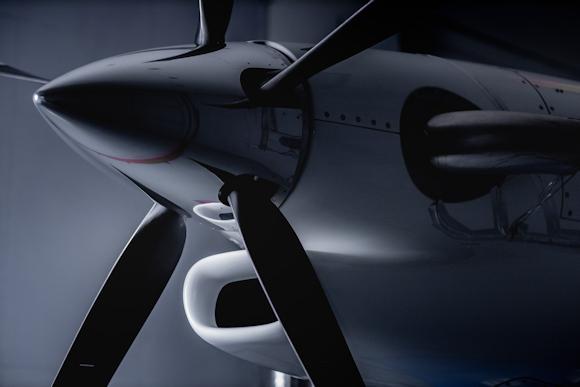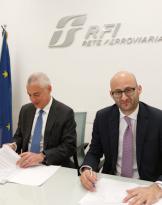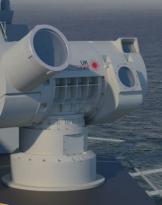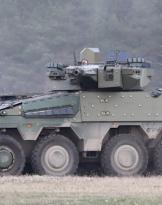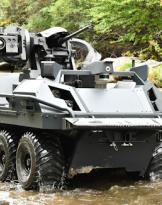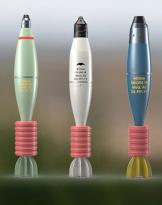The GE Catalyst ™, the GE Aviation turboprop engine designed and developed from scratch in Europe thanks to the contribution of 6 states including Italy and with entirely European technologies, is ready to cut another important milestone in its development phase. In fact, by spring 2020 the first flight of the turboprop designed to meet the needs of both the civil and military markets, with particular reference to remotely piloted aircraft (UAV), Trainers and Light Transport.
The engine, conceived also thanks to the wide contribution of Avio Aero engineering, stands out in its reference class (1100 - 1300 horsepower) for new performance, systems and components.
Of great relevance is also its European character which, in addition to allowing us to benefit from European independence and the technological growth of our industries, offers another fundamental competitive advantage: independence from the ITAR (International Traffic in Arms Regulations) regime. In fact, the engine is not subject to American government control and the military variant of the Catalyst will be subject only to the Italian export regime.
 "The Catalyst is a school case related to a pan-European project with state-of-the-art technologies and performance, in which Italy plays a leading role thanks to the design and production know-how of Avio Aero - said Paolo Salvetti, Sales Director Military Catalyst of Avio Aero - The engine has exceeded the most optimistic expectations in terms of performance and reliability and, with the first flight by spring, it reaches an excellent stage in its development path. We are confident that for many years to come it will be an excellent response to the increasingly challenging requests of both civil and military users in a wide range of uses. "
"The Catalyst is a school case related to a pan-European project with state-of-the-art technologies and performance, in which Italy plays a leading role thanks to the design and production know-how of Avio Aero - said Paolo Salvetti, Sales Director Military Catalyst of Avio Aero - The engine has exceeded the most optimistic expectations in terms of performance and reliability and, with the first flight by spring, it reaches an excellent stage in its development path. We are confident that for many years to come it will be an excellent response to the increasingly challenging requests of both civil and military users in a wide range of uses. "
The Catalyst is the first engine in its category to have the FADEC (Full Authority Digital Engine Control) system that controls not only the engine but also the propeller, allowing the optimization of performance at all flight speeds with a decrease in consumption about 15-20% compared to the average. This happens through a single control point, for a pilot experience similar to that of a jet, in which the pilot acts through a single lever to control the thrust of the propulsion system. A feature of great importance for remotely piloted aircraft because FADEC greatly simplifies integration with on-board avionics.
Other unprecedented features for the Catalyst class include the two variable geometry compression stages and the cooled high pressure turbine blades, elements that guarantee better performance, a faster response to commands and high reliability; in addition, the turboprop incorporates parts developed in additive manufacturing in the Italian Avio Aero plants, a technology that allows you to save weight and thus increase performance in a sustainable manner.

The engine also boasts: a compression ratio of 16: 1, the highest in its category, a guarantee of high thermal efficiency and therefore higher performance with low fuel consumption and 98 patented technologies, demonstrating a cutting-edge project from innovation point of view.
An important step in view of the first flight and a quick entry into service of the Catalyst is the integration, started on 23 January last by Avio Aero in its Brindisi plant, with the German propeller MT Propeller for military applications which, thanks to a particular structure that combines wood, metal and composite materials, it allows a weight reduction range between 8 and 20% and noise and vibrations from 30 to 50%. compared to other propellers on the market. The integration being developed in Brindisi will significantly reduce time and risks on future aircraft applications and will offer future military users a pre-integrated engine-propeller solution already tested and optimized also thanks to the contribution of the FADEC system.
The Catalyst, which has accumulated over 1.300 hours of testing with over 850 starts, has already passed the altitude tests up to 2019 feet (41 m) in May 12.496, has also completed the first certification test in October 2019 and will conclude the entire certification process by autumn 2021.
In tests, the Catalyst has demonstrated, thanks to its technological characteristics, an excellent ability to provide greater power and optimized performance at altitude also thanks to a reduced front section architecture that allows a significant reduction in aerodynamic drag and therefore lower fuel consumption, a 10% increase in payload and more than 2 hours more than the typical flight time of a typical UAV mission.

